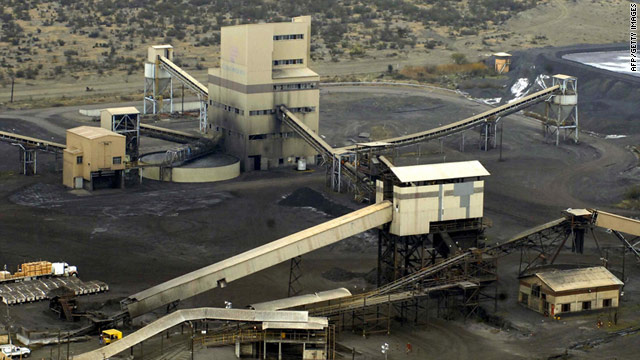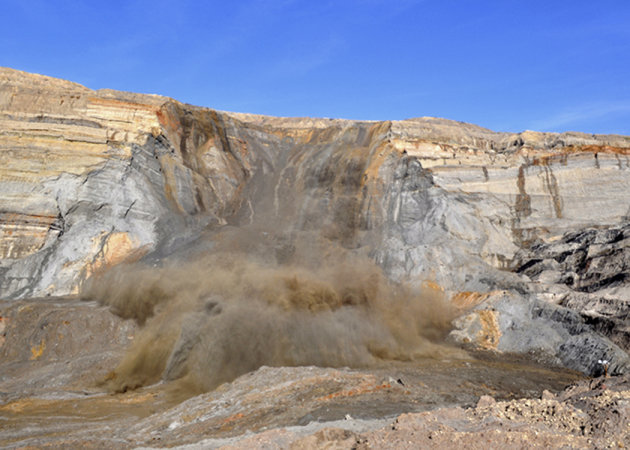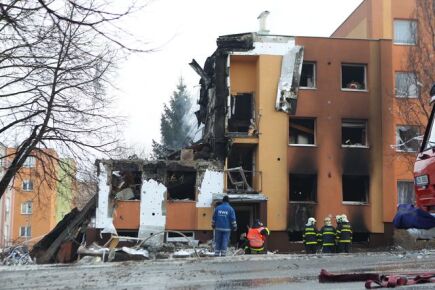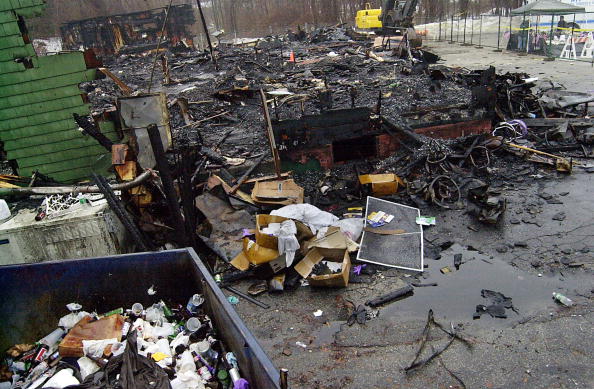The first three months of 2011 were an acid test for the Australian Capital Territory's 16-year-old urban search and rescue capability.
In early January two USAR 2-trained ACT Fire and Rescue members, Mark Johansen and Peter Fitzgerald, were sent to Queensland's Lockyer Valley as part of the joint NSW/ACT response to that emergency.
A little more than a month later, nine Canberra search and rescue volunteers were sent to New Zealand in response to the earthquake that rocked Christchurch on February 22. Read more: http://www.canberratimes.com.au/act-news/heroes-to-the-rescue-20130222-2exc5.html#ixzz2LdsVi4Yc
Part of the aftermath of the Christchurch earthquake.
Then, on March 11, 2011, while rescuers were still on the ground in Christchurch, a magnitude 9 earthquake devastated the north-east of Japan, causing a tsunami that peaked at 40.5 metres in some areas.
Canberra's first Urban Search and Rescue course was conducted in 1995, just two years before the Thredbo landslide disaster that killed 18 people and, miraculously, left Stuart Diver alive.
ACT Fire and Rescue's superintendent Pat Jones, the territory's top urban search and rescue expert, a veteran of Thredbo and a member of the third taskforce that was sent to Christchurch in March 2011, says the capability that has since evolved is world-class and that training modules developed in the ACT had become the gold standard adopted across the world.
He said urban search and rescue workers were classified by skill level and fell into one of three categories.
The first category, for which almost all police, SES, paramedics and firefighters have done mandatory training, qualifies a rescuer to be on top of the rubble pile in the event of an earthquake or other catastrophe.
Requirements include a knowledge of situational awareness, safe working practices and search and first-aid techniques.
To become a USAR 2 volunteer is a big step up and involves specialist and demanding training, which is usually carried out in Queensland or Adelaide.
Rescuers can be trained to this level only in specially built environments which simulate disaster zones and give them hands-on experience of working ''in the rubble pile'', one of the most dangerous rescue environments. Jones said that after an earthquake, landslide or building collapse, the rubble formed voids, cavities, tunnels and gaps into which survivors might crawl in search of safety. It was a highly unstable and topsy-turvy world, particularly after an earthquake where aftershocks almost always follow the main event.
''Once you are in the pile, it is surreal,'' he said. ''You don't know what is up and what is down; walls have become ceilings, ceilings floors and you don't know where you are. You are working with police whose job is to gather intelligence and pass it on to you.''
Thredbo was an example of this and police were able to pass on facts such as ''the third floor bathroom has brown tiles''. ''That type of information helps you orient yourself,'' Jones said. ''Thredbo was a very scary situation; I was cutting up [from the hole] and others were cutting down. I'm not a brave person but there would be something wrong if you weren't scared.''
There are currently more than 40 Category 2 qualified urban search and rescuers in the ACT Fire and Rescue Service, a disproportionately high number given the size of the force overall and one that recognises its role as a potential first responder across the alpine villages as well as in Canberra proper.
Veterans of the USAR 2 training told Fairfax it was intended to push participants hard mentally as well as physically. Claustrophobic tendencies are weeded out early and volunteers have to master vertical rescue, confined space and trench rescue techniques.
The training environment is loaded with urban waste, unpleasant fluids and rubble. It is considered the pinnacle of rescue training and participants have to qualify just to do the course.
''For us to have this number of people with such a demanding qualification takes a major commitment,'' Jones said.
The 48-year-old superintendent, who has been with ACT Fire and Rescue for a quarter of a century, is one of a handful of USAR 3 qualified rescuers in the territory. This means he is qualified to carry out the command and control function in a post-disaster environment in addition to having the same skills as the USAR 2 volunteers.
''These are the on-the-spot decision-makers, the people making life-and-death calls that affect their own team members as well as potential survivors,'' an ACT-based USAR 2 volunteer said. ''The only real comparison would be a command role in a battlefield environment.''
Jones was at Kambah for the naming of two new fire trucks on February 22, 2011, when he took the call alerting him to the Christchurch earthquake.
He was part of the third Australian taskforce, which brought together members from all over the country, that arrived in Christchurch on March 5, 2011.
''Over the 13-day deployment, team members worked 178 hours, the equivalent of 22 working days,'' he said. ''I learnt more in that 13 days than I ever would in my career here.''
Unlike taskforces one and two, which had been deployed for rescue and then body recovery, taskforce three was part of a program called ''beyond the rubble pile''.
This meant members went out beyond the devastated Christchurch CBD and worked with residents in the suburbs and areas that had not been so badly affected. Because the sewerage system had been cut, some jobs were as basic as digging toilet holes.
''Taskforce one completed 58 tasks in the rubble pile, recovering seven bodies and carrying out one live rescue,'' Jones said. ''Taskforce two, from Queensland, carried out 94 tasks, recovering 43 bodies and assisting in the recovery of many more.
''What these teams had to do was horrific; the only Australian comparisons you could make in terms of the physical trauma to victims are the Granville train smash, the Thredbo landslide and the Newcastle earthquake - but this was on a much larger scale.''
Jones, who had a good idea of what disaster looked like after the Thredbo landslide and the 2003 Canberra fires, said he was still unprepared for what he saw in Christchurch.
''I had been in Christchurch on holidays just three months previously,'' he said. ''I had walked around the city with my family and places I remembered as happy places had all been destroyed.''
The work of the third taskforce often bridged the gap between ''normal life'' and the disaster in ways members of the first two deployments would have found hard to believe. ''A lot of what we did was humanitarian work,'' Jones said. ''I remember a couple of jobs as very significant.
In one case we went into the ruins of a collapsed doctor's surgery and recovery the records of 1500 patients. This meant [the doctor] was able to set up a temporary surgery, with all her records, outside the CBD.
''We also had a crew access the safe at a restaurant that had been destroyed. The owner was desperate to get his cash out so he could pay his staff. The family, who lost their son in the earthquake, were so grateful they stayed on and cooked for the rescue teams on a volunteer basis.
''Christchurch has built on the Anzac spirit. That bond has been strengthened by what we did and I know that if something bad happened in Australia I'd love to have the New Zealanders here.''
Shocks still being felt
The 6.3-magnitude earthquake that struck Christchurch at 12.51pm on February 22, 2011, was much more devastating than the 7.1-magnitude quake that had struck New Zealand’s second largest city six months before, on September 4, 2010.
While technically weaker, the epicentre of the ‘‘aftershock’’ was much closer to the surface and only 10 kilometres from the centre of the city.
Christchurch is still recovering two years later and the population has fallen from 360,000 to about 355,000. Aftershocks are still being felt.
Five major aftershocks hit Christchurch between 1.04pm and 7.43pm on February 22, 2011. They ranged in Richter magnitude from five to 5.9. These hampered initial efforts to search for survivors and to evacuate the central city.
The Christchurch earthquake killed 185 people, levelled or devastated much of the CBD, and injured between 1500 and 2000 people, 164 seriously.
The first team of Australian urban search and rescue (USAR) workers (72 members, NSW) arrived within 12hours. The second team, from Queensland, arrived on February 24. It had 70 members and sniffer dogs.
A third Australian USAR team was dispatched on March 4 and 5. This team focused on humanitarian work as part of a program called ‘‘beyond the rubble pile’’.
Nine volunteers from ACT Fire & Rescue and ACT Ambulance were among the hundreds of Australians who crossed the Tasman to help.
Craig Perks, Matt Spackman, Chris Lind and Sam Evans were members of the first taskforce. Kaye Bradtke, Col O’Rourke and Superintendent Pat Jones were members of the third taskforce, as were paramedics Darren Neville and Robert Wiggins.
Friday 22 February 2013
Read more: http://www.canberratimes.com.au/act-news/heroes-to-the-rescue-20130222-2exc5.html#ixzz2LdrBhO84












